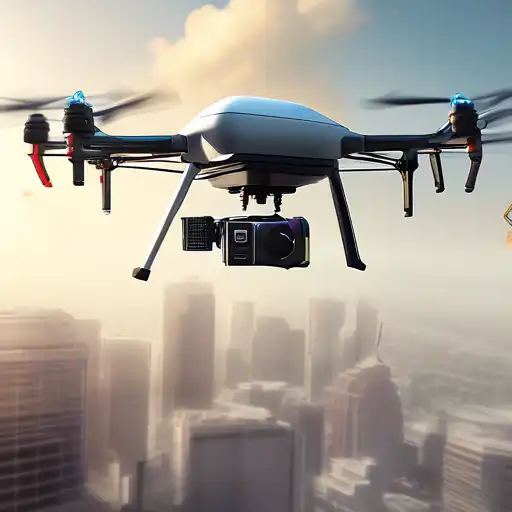Introduction to Commercial Drones
Commercial drones, also known as Unmanned Aerial Vehicles (UAVs), have revolutionized various industries by offering innovative solutions to traditional challenges. From agriculture to real estate, the applications of drones are vast and varied. This article delves into the opportunities presented by commercial drones and the regulatory framework governing their use.
Opportunities Unleashed by Commercial Drones
The advent of commercial drones has opened up new avenues for businesses across sectors. Here are some key areas where drones are making an impact:
- Agriculture: Drones are used for crop monitoring, spraying, and surveying, significantly reducing labor costs and increasing efficiency.
- Construction and Real Estate: Aerial photography and surveying with drones provide comprehensive views of properties and construction sites, enhancing marketing and planning.
- Delivery Services: Companies like Amazon and UPS are experimenting with drone delivery systems to expedite shipping processes.
- Emergency Response: Drones play a crucial role in search and rescue operations, delivering medical supplies, and assessing disaster-stricken areas.
Navigating the Regulatory Landscape
While the potential of commercial drones is immense, their operation is subject to strict regulations to ensure safety and privacy. Key regulatory considerations include:
- Registration and Licensing: Operators may need to register their drones and obtain necessary licenses depending on their country's regulations.
- No-Fly Zones: Drones are prohibited from flying near airports, military bases, and other sensitive areas.
- Privacy Laws: Operators must adhere to privacy laws, ensuring that drone usage does not infringe on individuals' privacy rights.
- Insurance Requirements: Some jurisdictions require drone operators to have liability insurance to cover potential damages.
Future Prospects and Challenges
The commercial drone industry is poised for exponential growth, with advancements in technology paving the way for more sophisticated applications. However, challenges such as air traffic management, privacy concerns, and regulatory hurdles need to be addressed to fully realize the potential of drones.
For businesses looking to integrate drones into their operations, staying informed about the latest drone regulations and technological trends is crucial. By navigating the opportunities and regulations effectively, companies can leverage drones to gain a competitive edge.
Conclusion
Commercial drones offer transformative opportunities across industries, but their use is bound by a complex regulatory framework. Understanding both the potential and the legal landscape is essential for businesses and operators aiming to harness the power of drone technology. As the industry evolves, staying ahead of regulatory changes and technological advancements will be key to success.
